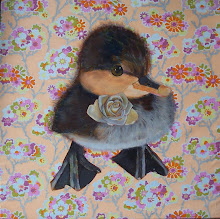Artnet: Dana Schutz’s Painting of Emmett Till at Whitney Biennial Sparks Protest - “It’s not acceptable for a white person to transmute Black suffering into profit and fun,” says artist Hannah Black. by Lorena Muñoz-Alonso
Subscribe to:
Post Comments (Atom)


2 comments:
This is what ISIS or the NAZIS do they demand that you don't paint something and then if you do you they take it out and burn it. Suffering is nobodies franchise and the artist wasn't painting it for fun or profit. I find the impulse to tell others what art has to be or not to be offense, extremely dangerous and totalitarian.
What surprised me to be honest, was that people are concerned enough, one way or the other - rightly or wrongly, that a painting, hanging in a respected museum, could carry such an emotional charge. That it could be viewed as being bigoted or racist or problematic or abusive. I had thought painting had lost that type of luster which is now more common in film and video, maybe some writing too. On the other hand, it could very well be that the objection is that it was perceived to be bigoted from the top down - the artist, the museum, the fact that it is now given a lofty perch in a museum and is therefore now a cultural artifact. I mean it's either nothing or it's really deep, or, to be mundane about it, who cares. Save the fight for the ultra-important battles IMO. Most artists do things like this out of a sense of duty and high regard, not out of scheming to make a name on suffering. That's more like the work of someone like Milo Yiannopoulos. And yes, suffering is suffering is suffering. Everyone experiences pain, suffering is when pain takes over and the mind can't be aware and reflexive to pain. We all have had pain and we've all had suffering. And again on the other hand, in a free society, the objector has the freedom to express their protest. Sometimes people do this type of thing in order to gain attention. One could possibly make an argument for that as well, it's not the artist or museum who is capitalizing on the suffering but the objector who is capitalizing on a opportunity to grab attention. It's complex.
Post a Comment